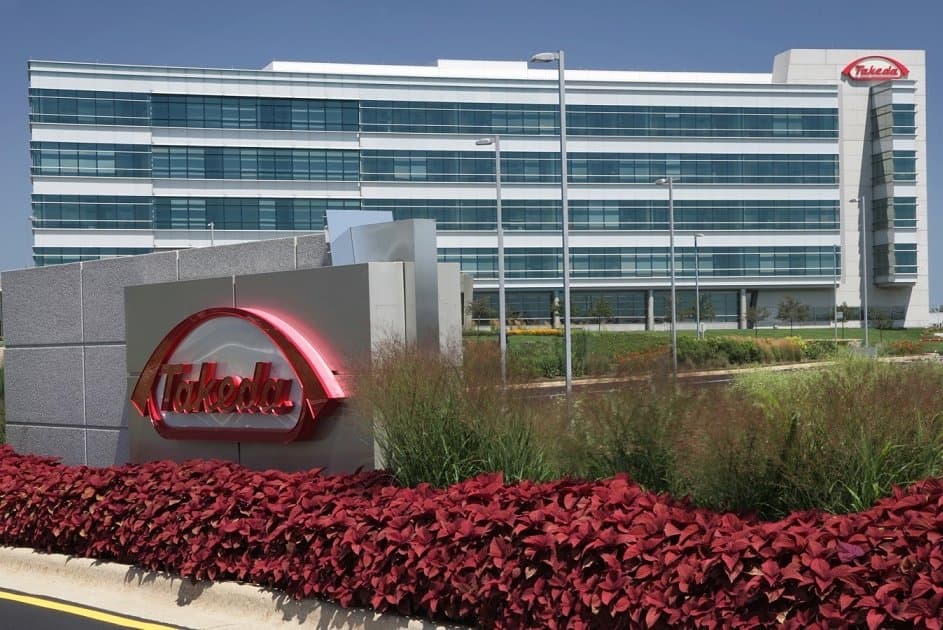Nabla Bio and Takeda Expand AI Drug Design Partnership Over $1B
Discover how Nabla Bio and Takeda’s $1 billion AI drug design partnership is reshaping antibody therapeutics, accelerating discovery, and tackling previously untreatable diseases with cutting-edge AI technology.

Key Takeaways
- Nabla Bio and Takeda’s AI partnership exceeds $1 billion in value
- Nabla’s AI platform designs antibodies targeting hard-to-treat diseases
- The collaboration accelerates drug discovery with a 3-4 week design-to-test cycle
- Nabla focuses on partnerships over building its own drug pipeline
- Takeda shifts focus to scalable drug types, exiting cell therapy research

Imagine a world where designing life-saving medicines happens not in years, but weeks. That’s the promise behind the expanded partnership between U.S. biotech Nabla Bio and Japan’s Takeda Pharmaceutical. Valued at over $1 billion, this alliance dives deep into artificial intelligence (AI) to fast-track antibody drug discovery.
Nabla Bio’s proprietary AI platform, the Joint Atomic Model (JAM), crafts protein-based therapeutics with precision, tackling diseases that traditional methods have long struggled to address. This collaboration builds on a 2022 agreement and signals a broader pharmaceutical shift toward AI-driven innovation.
In this article, we unpack how Nabla and Takeda’s partnership is rewriting the rules of drug design, why AI is more than a buzzword in pharma, and what this means for the future of medicine.
Harnessing AI for Antibody Design
Think of Nabla Bio’s AI platform, JAM, as a molecular architect with a lightning-fast sketchpad. Unlike traditional drug discovery, which can drag on for years, JAM designs antibodies from scratch in response to precise molecular questions. It’s like asking ChatGPT to write a novel, but instead, JAM crafts proteins that bind exactly where needed.
This isn’t sci-fi. Nabla claims to have one of the fastest feedback loops in the industry, turning designs into lab tests within three to four weeks. That speed is a game-changer, especially when tackling diseases that have long resisted treatment.
By combining AI predictions with rapid wet-lab experiments, Nabla creates a closed-loop system that iterates quickly. This synergy between machine learning and biology accelerates discovery while reducing costly trial-and-error. It’s a fresh take on an old problem, proving that AI isn’t just hype—it’s a powerful tool reshaping pharma’s future.
Strategic Partnership Model
Nabla Bio’s approach flips the biotech playbook. Instead of building its own drug pipeline, Nabla partners with pharmaceutical giants like Takeda, AstraZeneca, and Bristol Myers Squibb. This strategy lets Nabla focus on what it does best: pioneering AI-driven antibody design.
The latest deal with Takeda, valued at over $1 billion, includes upfront payments in the double-digit millions and milestone rewards tied to success. This structure aligns incentives and shares risk, a smart move in the high-stakes world of drug development.
Takeda benefits by integrating cutting-edge AI into its discovery pipeline, focusing on scalable, next-generation biologics. This partnership reflects a broader industry trend where big pharma taps nimble AI innovators to speed up R&D without the overhead of building everything in-house.
Tackling Hard-to-Drug Diseases
The partnership zeroes in on diseases that have long frustrated drug developers. Nabla’s AI platform designs multi-specific antibodies and custom biologics aimed at targets previously labeled “undruggable.”
Why does this matter? Because many patients suffer from conditions without effective treatments. By unlocking these molecular puzzles, Nabla and Takeda could open entirely new therapeutic avenues.
While specific disease targets remain under wraps, the collaboration’s focus on early-stage pipelines and hard-to-treat diseases signals a commitment to innovation where it’s needed most. It’s a bold bet on AI’s ability to crack nature’s toughest codes.
Industry Trends and Competitive Edge
In a crowded AI biotech landscape, Nabla stands out by raising a modest $26 million Series A in 2023, far less than rivals like Xaira Therapeutics or Generate:Biomedicines. This lean funding approach underscores a belief that transformative tech doesn’t require a billion-dollar war chest.
Nabla’s credibility shines through multiple partnerships rather than flashy internal pipelines. Its focus on collaboration over competition positions it as a platform innovator, not a traditional drugmaker.
Meanwhile, Takeda’s recent exit from cell therapy research to focus on scalable drug types aligns perfectly with this AI-driven partnership. It’s a strategic pivot reflecting the pharmaceutical industry’s evolving playbook in the digital age.
Accelerating Drug Discovery Timelines
Speed is the currency of modern drug discovery, and Nabla’s AI platform delivers. With a turnaround of just weeks from design to lab testing, the traditional drug development timeline is being compressed dramatically.
Takeda expects first-in-human data from AI-designed molecules within one to two years, a rapid pace compared to conventional methods that often take a decade or more.
This acceleration not only cuts costs but also reduces early-stage failure risks, offering hope for faster patient access to breakthrough therapies. It’s a vivid example of how AI is transforming pharma from a slow-moving giant into a nimble innovator.
Long Story Short
The Nabla Bio and Takeda partnership isn’t just a headline—it’s a glimpse into the future of medicine where AI and human ingenuity join forces. By leveraging Nabla’s rapid AI-driven antibody design and Takeda’s global expertise, this collaboration promises to unlock treatments for diseases once deemed untouchable. For investors and industry watchers, the deal underscores a strategic pivot: partnering with AI innovators rather than building costly internal pipelines. It’s a smart, focused approach that balances risk with cutting-edge technology. As Nabla expects first-in-human data within a couple of years, the excitement is palpable. The relief of faster, safer drug discovery is not just a dream—it’s becoming reality. For patients worldwide, that means hope arriving sooner than ever before.